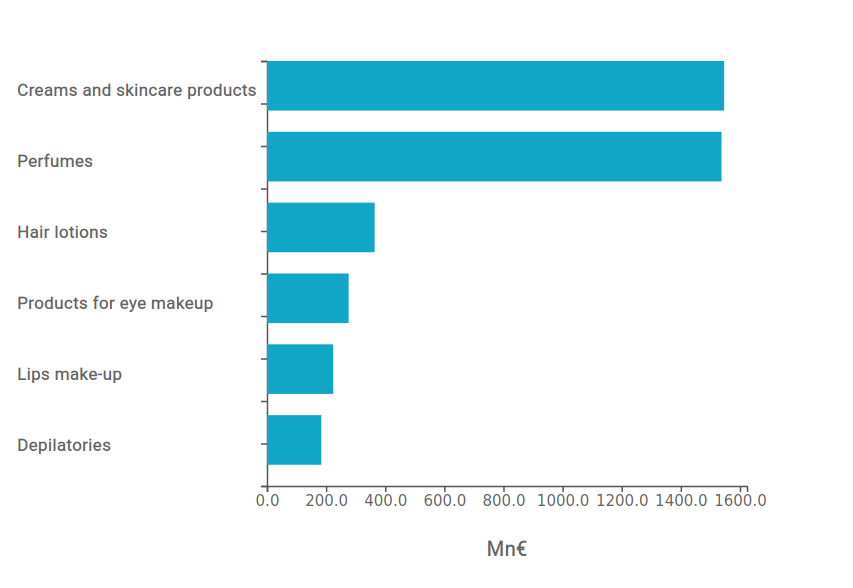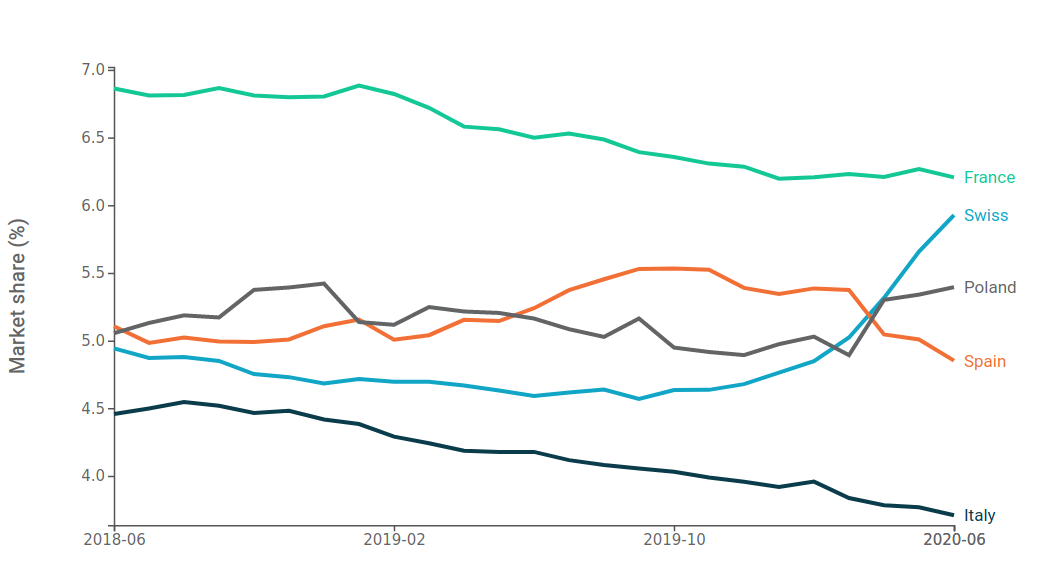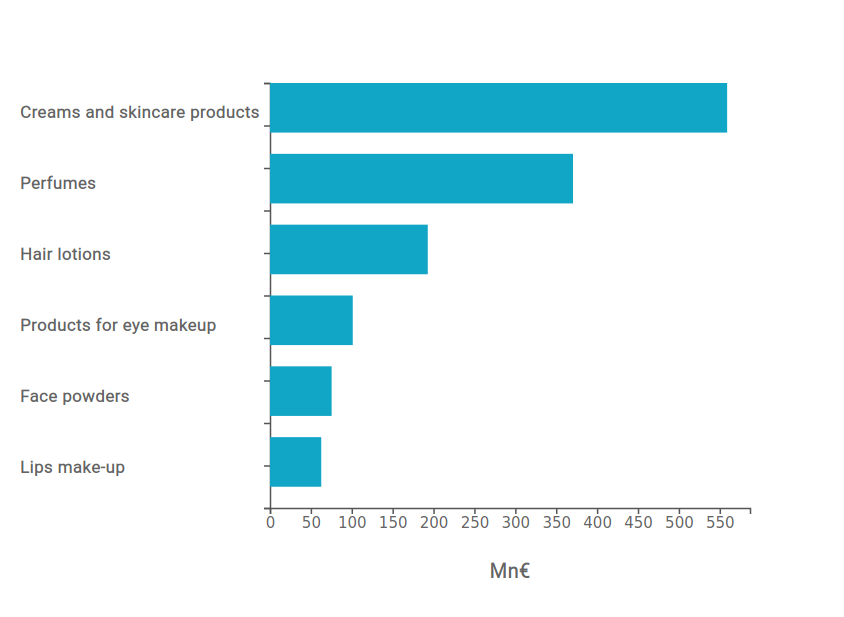Export of beauty products: Opportunities in North European markets
The cosmetics sector has been characterized by dynamic growth in the last decade, especially in the premium segments
Published by Marzia Moccia. .
Europe Competitor analysis Conjuncture Export markets International marketingDuring the last decade the cosmetics sector has been characterized by particularly accelerated growth dynamics of international trade: between 2009 and 2019 the average annual growth rate (CAGR) was in fact higher than 8%. In particular, the most significant increase was recorded by global demand towards the higher price bands, signalling the increasing propensity of international consumers to recognise a quality premium. In 2019, with a value of 24 billion €, the premium market segment accounted for approximately 30% of global demand in the cosmetics sector, as shown in the graph below.
Global demand for cosmetic products (1995-2019)
Although the economic picture of the sector seems to be particularly marked by the pandemic crisis from Covid-19, with generalized decreases affecting all major segments (see previous article Cosmetics: Sharp Drop in Global Demand in H1-2020), it's particularly interesting to map the main European markets that are characterized by a strong propensity to recognize a quality premium, in order to identify the main market trends in view of a recovery of the demand. In the current international context, in fact, the correct definition of international positioning strategy represents a fundamental factor for the defense of companies's competitive advantage.
Globally, European imports of cosmetic products represent about 30% of the global demand of the sector, underlining the importance of the Old Continent for companies in the sector. In particular, the analysis will focus on 3 North European markets, such as:
- Germany
- Poland
- Sweden
The German market
The German market is by far one of the main destination markets on the international scene: in 2019 the country's imports signed 4.5 billion €, with demand strongly concentrated in the high and medium-high price bands.
The demand for foreign cosmetic products is particularly directed towards Products for Skincare and Perfumes and toiletries, worth more than 3 billion € in 2019.

Despite a downward trend in recent years, France holds about 35% of the market, maintaining a market leadership that has remained almost unchanged in recent years. The main remaining competitors, especially Italy,Switzerland,Spain and Poland are positioned at much lower values. In addition, the analysis of the latest available economic data shows that countries such as Spain and Italy have experienced a sharp deterioration of their competitive position in recent months, which has instead benefited, at least in the short term, competitors such as Switzerland and Poland.
Main imported beauty products

The Polish market
With a value of cosmetic imports that in 2019 exceeded the threshold of 1.4 billion €, Poland is one of the European markets characterized by a particularly dynamic growth in recent years, which has gone hand in hand with the increase in per capita income.
As for the German market, the main import products are Skincare Products and Perfumes, for which the incidence of the high and medium-high price bands is particularly significant: in the case of skincare products about 50% of demand is concentrated towards the premium price ranges, while in the case of perfumes more than 78%.
Main imported beauty products

France and Germany are market leaders, with a market share close to 20%.
The Swedish market
Unlike previous markets, the Swedish market has not been characterized in recent years by a growth in absolute values of the demand for cosmetic products, which in 2019 was just over 550 million €, but rather by a decisive change in the composition of its imports, which is increasingly importance of premium price ranges. This change is particularly visible for imports from Italy, as shown in the graph below.
Particularly relevant for the market is the import of skincare products: in 2019 these products represented more than 50% of the total demand of the comestics sector. However, the incidence of the premium price bands is much more significant in the case of make-up products.
Conclusions
The markets under investigation have significant potential linked to the growing importance of the medium-high price ranges. However, this trend is only partially intercepted by Italian companies, in the face of a significant presence of the French competitor.


